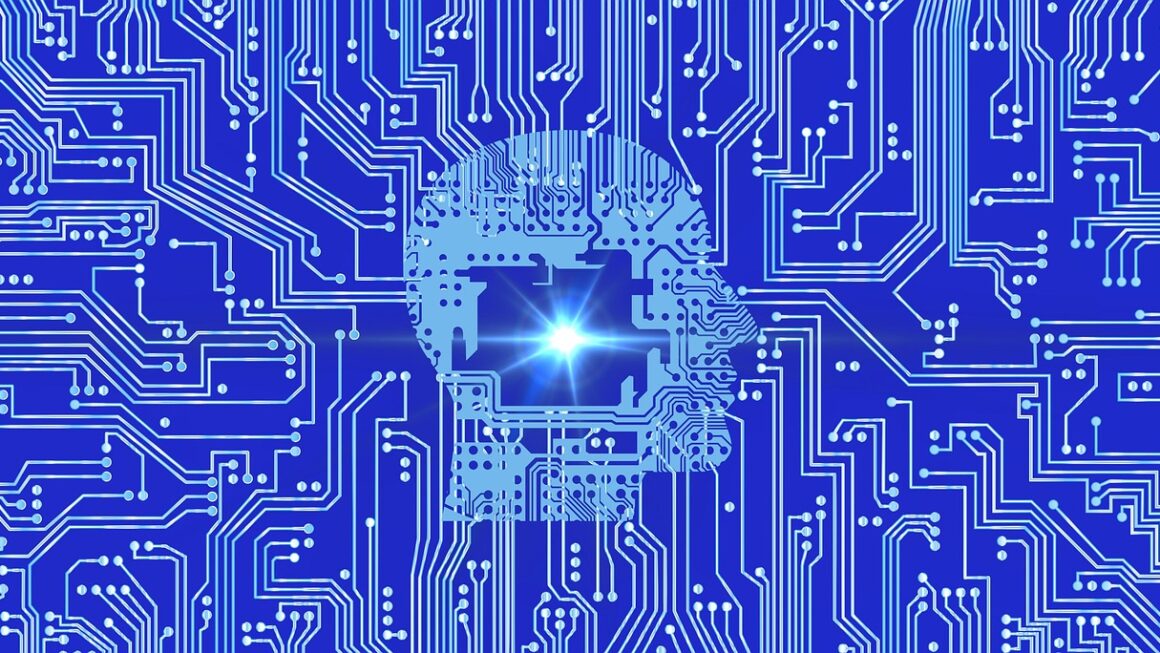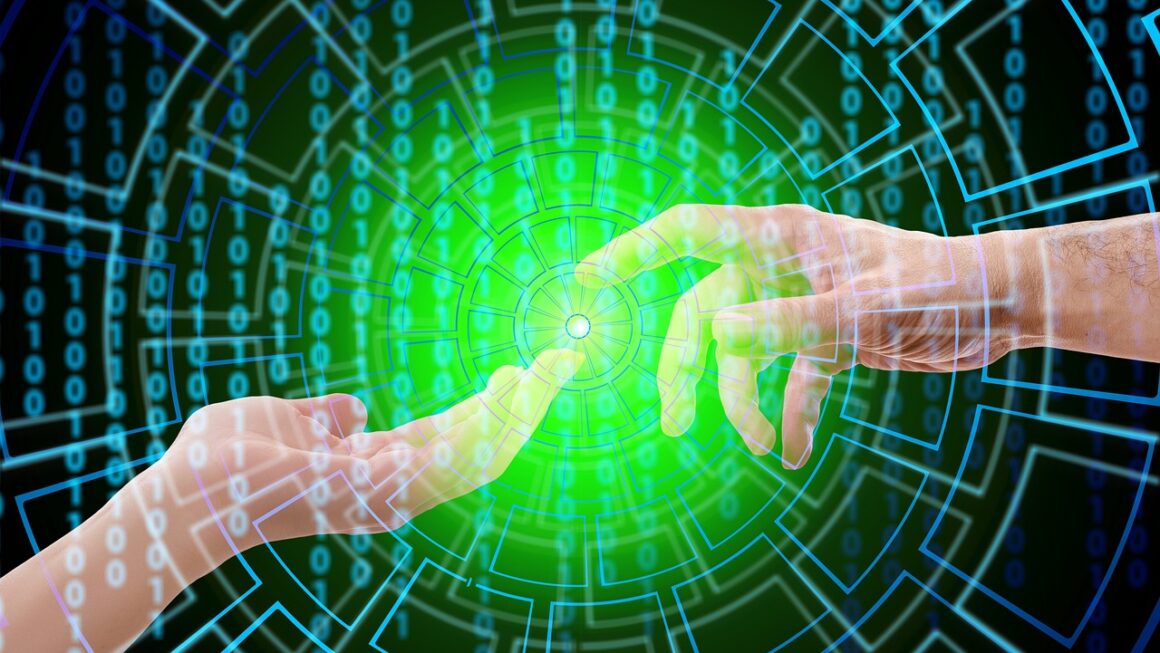Neural networks, the cornerstone of modern artificial intelligence, might sound like complex mathematical models only understood by seasoned data scientists. However, the core concept behind them is surprisingly intuitive: they mimic the way the human brain learns, enabling computers to recognize patterns, make predictions, and solve intricate problems with impressive accuracy. This blog post delves into the fascinating world of neural networks, exploring their architecture, training process, various applications, and future potential.
What are Neural Networks?
Neural networks, also known as artificial neural networks (ANNs), are a set of algorithms designed to recognize patterns. They interpret sensory data through a kind of machine perception, labeling or clustering raw input. In essence, they are computer systems inspired by the biological neural networks that constitute animal brains.
The Building Blocks: Neurons, Weights, and Biases
- Neurons (Nodes): These are the basic units of a neural network, analogous to neurons in the human brain. Each neuron receives input, processes it, and produces an output.
- Weights: Weights are assigned to the connections between neurons. They represent the strength of the connection; a higher weight means a stronger influence. During training, these weights are adjusted to improve the network’s performance. For example, in an image recognition network, the connection between a neuron that detects edges and a neuron that detects eyes would have a high weight if the presence of edges is highly indicative of an eye.
- Biases: Biases are added to neurons to adjust the output. They act as a threshold, allowing the neuron to fire even when the input is low. Imagine a light switch; the bias determines how much pressure you need to apply to turn the light on.
- Activation Functions: These functions determine the output of a neuron based on its input. Common activation functions include sigmoid, ReLU (Rectified Linear Unit), and tanh. ReLU, for example, outputs the input directly if it’s positive, and zero otherwise. This helps the network learn faster and prevent the “vanishing gradient” problem.
Network Architecture: Layers and Connections
Neural networks are organized into layers:
- Input Layer: Receives the initial data. For example, in an image recognition task, the input layer would receive the pixel values of the image.
- Hidden Layers: Perform the majority of the processing. There can be one or more hidden layers. These layers extract features and learn complex patterns from the data. Deep learning models typically have many hidden layers.
- Output Layer: Produces the final result. In a classification task, the output layer might output probabilities for each class (e.g., the probability that an image contains a cat or a dog).
The neurons in each layer are connected to neurons in the next layer. The way these layers are connected and the number of neurons in each layer define the network’s architecture.
How Neural Networks Learn: The Training Process
Training a neural network involves feeding it data and adjusting the weights and biases to minimize the difference between the network’s predictions and the actual values. This process is called optimization.
Forward Propagation: Making Predictions
During forward propagation, the input data is passed through the network, layer by layer. Each neuron performs its calculation, applying weights, biases, and an activation function. The output of each layer becomes the input for the next layer, until the final output is produced.
Backpropagation: Adjusting the Network
Backpropagation is the core of the training process. It involves calculating the error between the network’s prediction and the actual value, and then propagating this error back through the network to adjust the weights and biases.
- Calculating the Error (Loss Function): The loss function quantifies the difference between the predicted output and the actual output. Common loss functions include mean squared error (MSE) and cross-entropy.
- Gradient Descent: Optimization Algorithm: Gradient descent is an iterative optimization algorithm used to find the minimum of a function. In the context of neural networks, it’s used to adjust the weights and biases to minimize the loss function. The “gradient” represents the direction of steepest ascent of the loss function, so gradient descent moves in the opposite direction to find the minimum.
Data is Key: The Importance of Datasets
Neural networks require large datasets to learn effectively. The quality and quantity of the data significantly impact the network’s performance.
- Training Data: Used to train the network.
- Validation Data: Used to evaluate the network’s performance during training and prevent overfitting. Overfitting occurs when the network learns the training data too well and performs poorly on unseen data.
- Testing Data: Used to evaluate the final performance of the trained network on completely unseen data.
Types of Neural Networks: A Variety of Architectures
Different types of neural networks are designed for different tasks. Here are a few common architectures:
Feedforward Neural Networks (FFNNs)
- The simplest type of neural network, where information flows in one direction, from input to output.
- Suitable for tasks like classification and regression.
- Example: Predicting house prices based on features like size, location, and number of bedrooms.
Convolutional Neural Networks (CNNs)
- Specifically designed for processing images and videos.
- Use convolutional layers to extract features from images.
- Highly effective for image recognition, object detection, and image segmentation.
- Example: Identifying objects in a photograph, such as cats, dogs, and cars.
Recurrent Neural Networks (RNNs)
- Designed for processing sequential data, such as text and time series.
- Use recurrent connections to maintain a “memory” of past inputs.
- Effective for natural language processing, machine translation, and speech recognition.
- Example: Predicting the next word in a sentence or translating text from one language to another. LSTM (Long Short-Term Memory) and GRU (Gated Recurrent Unit) are popular types of RNNs that address the vanishing gradient problem and can handle long-range dependencies.
Generative Adversarial Networks (GANs)
- Consist of two networks: a generator and a discriminator.
- The generator creates synthetic data, while the discriminator tries to distinguish between real and synthetic data.
- Used for generating realistic images, videos, and music.
- Example: Creating realistic images of faces that don’t exist.
Applications of Neural Networks: Transforming Industries
Neural networks are revolutionizing various industries with their ability to solve complex problems and automate tasks.
Computer Vision
- Image Recognition: Identifying objects, people, and places in images and videos. Face recognition systems, autonomous vehicle navigation, and medical image analysis rely heavily on image recognition.
- Object Detection: Locating specific objects within an image. Used in self-driving cars to detect pedestrians and other vehicles.
- Image Segmentation: Dividing an image into regions with different semantic meanings. Used in medical imaging to identify tumors and other abnormalities.
Natural Language Processing (NLP)
- Machine Translation: Translating text from one language to another. Google Translate and other translation services use neural networks to provide accurate and fluent translations.
- Sentiment Analysis: Determining the emotional tone of text. Used in customer service to identify angry or frustrated customers.
- Chatbots: Creating conversational agents that can interact with humans. Used in customer support and sales to provide automated assistance.
Healthcare
- Disease Diagnosis: Assisting doctors in diagnosing diseases based on medical images and patient data. Neural networks can identify subtle patterns in medical images that are difficult for humans to detect.
- Drug Discovery: Identifying potential drug candidates and predicting their efficacy. Neural networks can analyze large datasets of chemical compounds and biological data to identify promising drug leads.
- Personalized Medicine: Developing customized treatment plans based on individual patient characteristics. Neural networks can analyze patient data to predict treatment outcomes and identify the most effective therapies.
Finance
- Fraud Detection: Identifying fraudulent transactions. Neural networks can analyze transaction data to detect patterns that are indicative of fraud.
- Algorithmic Trading: Developing automated trading strategies. Neural networks can analyze market data to identify profitable trading opportunities.
- Risk Assessment: Assessing the creditworthiness of borrowers. Neural networks can analyze credit history and other financial data to predict the likelihood of default.
Conclusion
Neural networks have emerged as a powerful tool for solving a wide range of problems in various industries. Their ability to learn from data, recognize patterns, and make predictions makes them invaluable for automating tasks, improving decision-making, and gaining insights from complex data. As research and development in this field continue to advance, we can expect to see even more innovative and impactful applications of neural networks in the future. Embracing this technology and understanding its capabilities is crucial for businesses and individuals alike to stay competitive in an increasingly AI-driven world. Learning about the basics of neural networks, their various types, and their applications opens doors to new opportunities and empowers us to harness the potential of this transformative technology.




